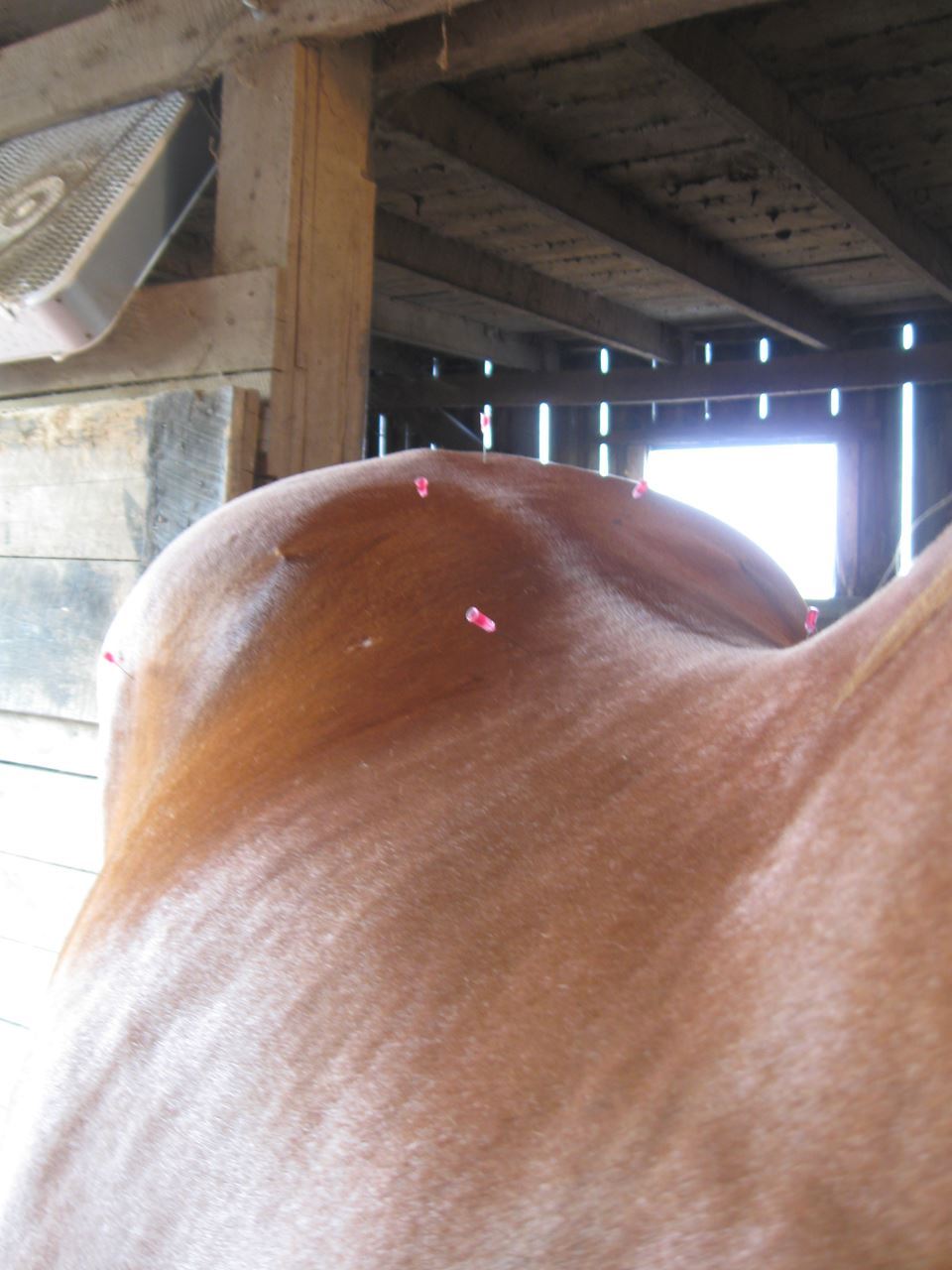There are multiple modalities available to aid ailing horses now than ever before. Here are just a few ways you can help your horse feel his best in addition to traditional Western medicine. Many of these are used in conjunction to keep your steed feeling top-notch. The first in a two-part series will cover the two most common alternative therapies: acupuncture and chiropractic care.
By Sarah E Coleman
While Western medicine has long been the gold standard of equine care in the United States, over the past few decades, dedicated horse owners have been expressing interest in a wide range of non-mainstream modalities to keep their horses feeling top-notch.
Here are just a few of the alternative therapies that can assist you in your quest to keep your horse feeling his best.
Acupuncture
One of the most-common Eastern medicine modalities, acupuncture is used most commonly for musculoskeletal complaints, explains Dr. Martha Rodgers of Shephard Hill Equine in Lexington, Ky. “Acupuncture can also be utilized as a treatment for other conditions, like cardiac, respiratory, reproductive and gastrointestinal issues, as well as part of a wellness exam.”
Acupuncture involves the insertion of a needle over specific points of a horse that correlate to certain anatomic structures of the nervous system. The needles cause a small place of trauma, which incites a local inflammatory response. This in turn triggers increased blood flow and muscle relaxation.
While most people are familiar with the use of just needles for acupuncture (called “dry needling”), there are additional acupuncture modalities that can be used to help a horse. Dr. Rodgers explains the different types of acupuncture therapy:
-
Dry needling
-
Aquapuncture, the injection of a fluid through the needle (typically B12), which will continue to stimulate the point after the needle is removed and until the liquid is absorbed
-
Moxibustion, where an herb is burned over an acupuncture point to stimulate the point
-
Electroacupuncture (also called electrostimulation), where electrodes are attached to the acupuncture needles and a pulsing electrical current is applied

Any of these acupuncture treatments can offer both local and systemic effects. They all cause vasodilation and a change in pain fiber transmission
. Acupuncture can also cause histamine and endorphin release, promoting healing.
While some people have their horses regularly receive acupuncture treatments, it truly is a case-by-case basis. Whether or not your acupuncturist needs to have a doctorate in veterinary medicine degree varies state by state, but because of the use of needles and the potential for harm to an underlying structure (ie. joint or vessel) a DVM is usually required to have a thorough knowledge of the horses’ anatomy.
Chiropractic Care
Like acupuncture, chiropractic care seeks to keep your horse in optimal health. Chiropractic care, however, assesses the alignment and mobility of the spine. When any area is out of alignment, also called subluxation, your horse can be affected in a myriad of ways, including pain and changes in gait. This misalignment can also cause a physical issue by limiting the range of motion and flexibility typically exhibited in a joint.
 A chiropractor will apply force to a misaligned vertebra or joint to return it to its proper position. Depending on the issue being addressed, you may see an immediate improvement or the recovery may be more gradual, taking place over a period of days.
A chiropractor will apply force to a misaligned vertebra or joint to return it to its proper position. Depending on the issue being addressed, you may see an immediate improvement or the recovery may be more gradual, taking place over a period of days.
Similar to acupuncture, chiropractic care can be an ongoing regimen for your horse, or it can be used on an as-needed basis once any initial issues are addressed. For some horses, chiropractic sessions are helpful when regularly scheduled for an underlying issue.
 Like acupuncturists, different states require chiropractors to have different certifications, though 20 of the state currently require that equine chiropractors hold a degree in veterinary medicine. An additional 20 require that the equine chiropractor be under the supervision of a practicing vet.
Like acupuncturists, different states require chiropractors to have different certifications, though 20 of the state currently require that equine chiropractors hold a degree in veterinary medicine. An additional 20 require that the equine chiropractor be under the supervision of a practicing vet.
In the next issue: equine myofacial release, the use of lasers and osteopathic care.
